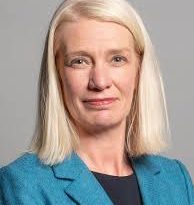Daniel Kawczynski – 2016 Parliamentary Question to the Department for Work and Pensions
The below Parliamentary question was asked by Daniel Kawczynski on 2016-03-07.
To ask the Secretary of State for Work and Pensions, what assessment he has made of the effect on the financial situation of women of their not being notified about changes introduced by the Pensions Act 1995.
Justin Tomlinson
The 1995 Act started the process of equalising the state pension age of women by phasing in the rise of the retirement age from 60 to 65 between 2010 and 2020. Changes were communicated by means of State Pension estimates issued to individuals on request since 1995, as well as through a DWP pensions education campaign in 2004. Since April 2000 more than 11.5 million personalised statements have been issued. A 2004 DWP report, Public Awareness of State Pension Age Equalisation, reported its survey findings that 73% of those aged 45 to 54 at the time were aware of the changes to women’s State Pension age.
Following the Pensions Act 2011 the Government wrote to all those directly affected to inform them of the changes to their State Pension age. Research published in 2007 by the DWP showed that, in 2006, 86 per cent of women aged 55-64 and 90 per cent aged 45-54 were aware that the State Pension age would increase in future.
A number of changes to the State Pension with impacts on state pension outcomes have been implemented since the introduction of the Pensions Act 1995. The Pensions Act 2007 introduced beneficial changes to the entitlement conditions for State Pension, which were estimated to result in 75 per cent of women reaching State Pension age in 2010 being entitled to a full basic State Pension compared to only 30 per cent in 2007.
The Pensions Act 2014 introduces the new State Pension from April 2016, available to women born on or after 6 April 1953. Around 650,000 women reaching State Pension age in the first ten years will receive an average of £8 per week (in 2014/15 earnings terms) more due to the new State Pension valuation of their National Insurance record. By 2030, over 3 million women will stand to benefit by an average of £11 per week.
Independent analysis by the Institute for Fiscal Studies has shown that the rise in women’s State Pension age since 2010 has been accompanied by increases in employment rates for the women affected. For those who are unemployed, or unable to work, working age benefits are still available.


